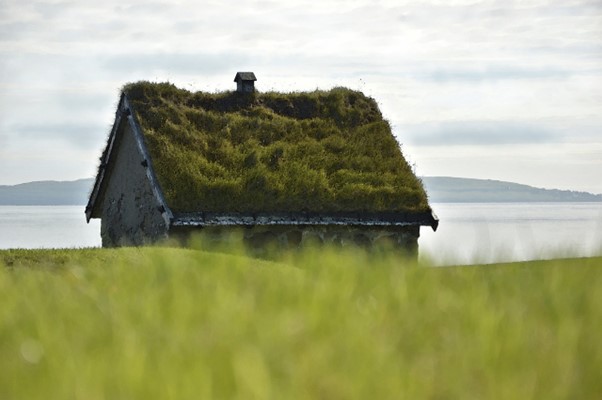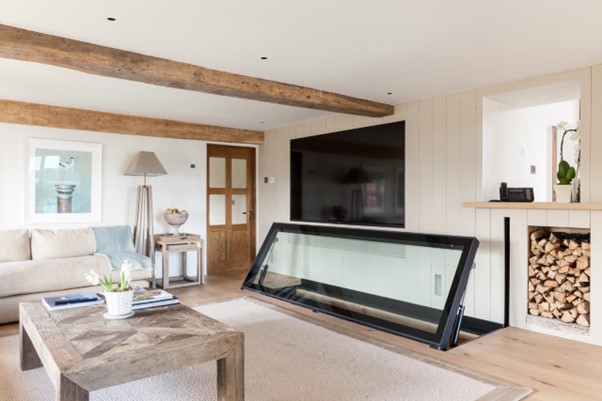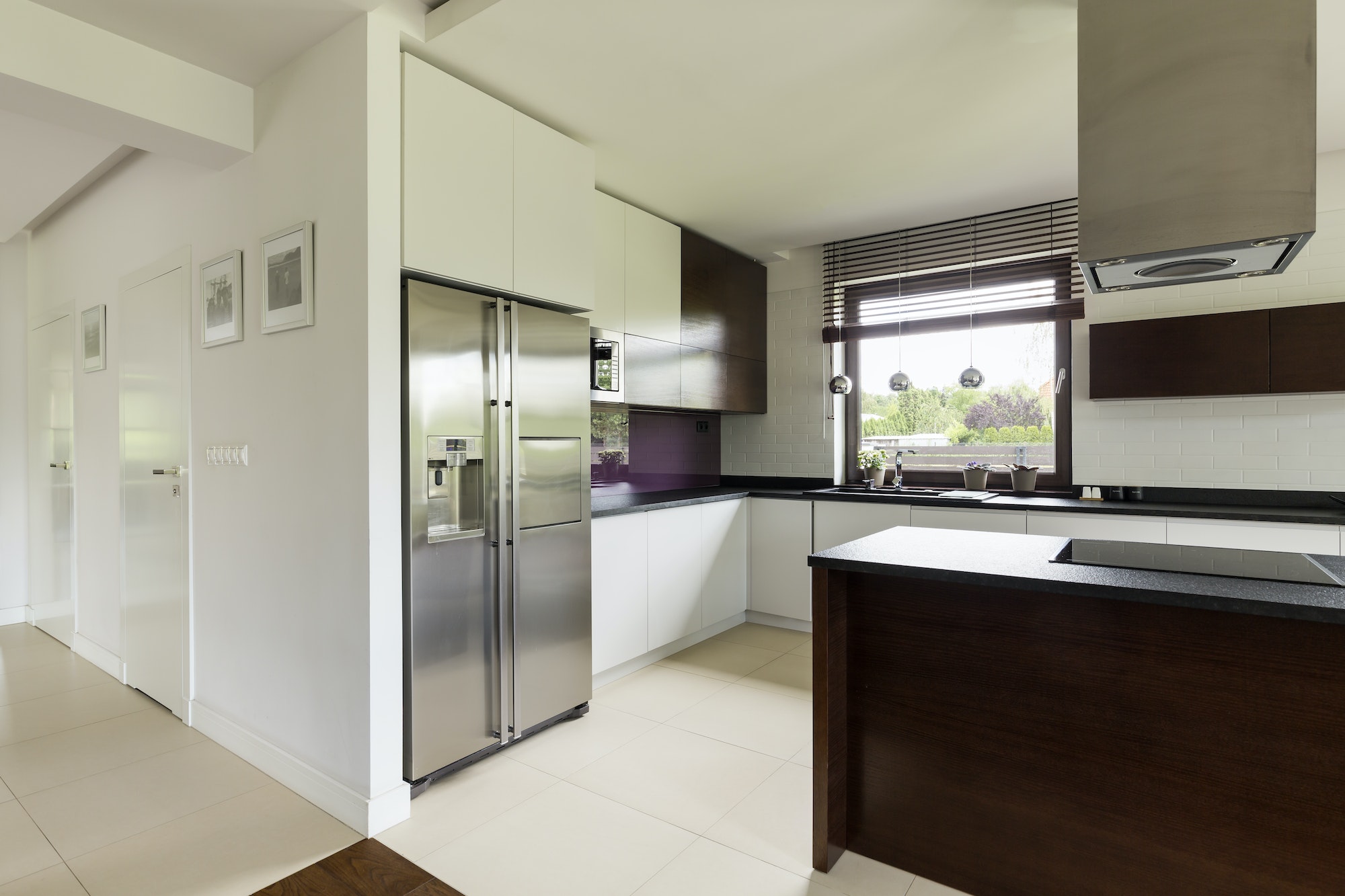Article Summary
“Have you always wanted to step outside the architectural box, but weren’t entirely sure how to do it? Perhaps you want to create something biophilic for the birds and the bees, or maybe you like the idea of delighting guests with a piece of structural glazing. Whether you’re a renovation essentialist – someone who wants to retain a building’s core characteristics – or a pioneer who dares to do things differently, this blog post will hopefully provide a few ideas to consider as we move through the second half of 2024. Read on to find out whether installing a glass floor is safe, whether a green roof can be pretty, and whether you can create something energy efficient as well as ergonomically impressive.”
Introduction
Would you consider yourself a renovation essentialist – who does what they need to maintain a building’s character and features – or a pioneer who dares to do things differently?
One in three UK homeowners are planning a major home renovation in the remaining months of 2024. For some people it is about adding value – a single-storey extension could, for example, add 11% to the resale price – for others, it is essential maintenance that has been put off for far too long (think leaky roof, outdated heating infrastructure, or windows that need to be far more energy efficient).
But there is another category in which you might belong.
We call this group the ‘pioneers’. Whatever their budget, the pioneers want to try something different; they push the innovation envelope and get architectural results that are truly unique.
In this blog post, we hope to provide you with several unique architectural ideas to consider as we move through the second half of 2024. Whether it’s an invisible glass corner in which to sit and enjoy a good book, Crittall-style windows reminiscent of a very cool Brooklyn loft, or a wall that not only holds up your house but powers it too, we have an idea to suit any budget and every taste.
Let’s start outside.
1) A green roof for the bees
The UK is home to approximately 433,000 hectares of gardens, a size larger than the Exmoor, Dartmoor and Lake District National Parks combined. As a result of this huge collective scale, many leading researchers believe that private green spaces play a vital role in preventing biodiversity decline. But even if your garden is great for wildlife, there is another area for conservation consideration often located just above your head: the roof.
Imagine looking up from your garden and watching grasses drifting in the wind, pollinators pinching pollen from an abundance of flowers, and birds darting between the lush foliage that crowns your home or commercial property. It might sound like something straight out of Tolkein’s world of The Hobbit, but the concept can – if you choose – be far from a fantasy. In fact, a green roof can be both stylish and practical, reducing energy consumption by as much as 75%!
If you love the idea of a green roof, one perhaps filled with herbs and succulents, why not also try a green wall? This can be achieved with evergreen climbers such as star jasmine (Trachelospermum jasminoides) and English ivy (Hedera helix) or plants that thrive in the cracks of your walls such as Mexican fleabane (Erigeron karvinskianus) and creeping thyme (Thymus serpyllum).

2) Corner glass for a heritage property
Is your property is surrounded by absolutely stunning views that are just outside your door? It occupies the highest point in the landscape, from which you would like to gaze across the rolling hills and maybe even the ocean below. But there is one problem – your windows face only one direction. Whether it’s north, east, south or west, you cannot look two ways at once.
Or can you?
(Yes is the answer.)
We say yes because we have installed plenty of corner glass in the last 30 years that looks great and maximises any available vista. You might use the newly-created space as a reading nook in which to enhance the experience of your favourite page-turner, or maybe your glass corner will act as a crystal-clear portal between in here and out there. Because corner glass is exceptionally versatile, it can be installed just as impressively on a heritage property as it can on something sleek and modern. As an example, a crumbling castle might have quite a large hole in one of its corners. With the addition of corner glass, you retain the drama of the ruin, whilst ensuring that it is habitable and, most of all, safe.
3) A glass floor to delight party guests
If you have ever stood on a glass floor suspended hundreds, if not thousands, of feet in the air, you will know how novel the experience was. Bring that novelty into your next renovation project with an in-built glass walkway that will delight your guests and act as a stunning focal point (such as when installed above a wine cellar, ruins or swimming pool).
It would, however, be wrong to view a glass floor simply as a novelty. Instead, it offers tangible practical benefits such as opening up the sightlines of your design and encouraging natural light to flood the space. Furthermore, underfloor glazing is incredibly versatile, offering you a number of options – such as whether it moves or is static, and how minimalist it appears.

4) Subtle solar panels to generate energy
Renewable energy is the future. It offers us a relatively clean route towards net zero, vital if the UK is to meet its international legislative commitments and prevent the worst impacts of man-made climate change. While most solar panels stand proudly on the roofs of buildings across the country, many architects and designers have asked whether this technology can be incorporated into the fabric of our homes far more subtly.
The result is a new technology – not yet widely available, but produced by a small selection of manufacturers – known simply as solar windows. These are – perhaps unsurprisingly – windows that produce solar power. They are entirely transparent but can also come in a variety of colours – blending in or standing out when incorporated into any style of design.
5) Crittall windows for a stylish retro throwback
Few places in the world are cooler than Brooklyn, downtown New York. Contributing to that label of coolness are the iconic loft conversions that sprang up in the 20th century following the decline of manufacturing. These lofts have high ceilings, bare wooden floors, striking steel girders and, best of all, thick-framed Crittall windows.
When Crittall windows were first manufactured, well over a century ago, glass was significantly more expensive and less amenable than it is today. Each individual pane of glass was relatively small, preventing accidental shattering, but added together, the vast glazing floods a space with an abundance of natural light. As technology and engineering improved throughout the 20th century, the windows declined in popularity, but today they have made a big comeback as part of a wholesale move towards industrial chic and a vintage revival.
Would you like to know the best bit about installing Crittall-style windows in our modern world? You can have all of the style that goes with the original glazing, whilst also enjoying all of the energy-efficient benefits that come with subsequent glazing developments. In short, you can have your Crittall cake and eat it too.
Conclusion
None of the above ideas are going to start a revolution in the world of architecture. But they can enhance and modernise existing concepts, blending practicality with aesthetic appeal to delight a designer who wants to do something a little different, but needs some inspiration to know what is possible. Being a ‘pioneer’ can be daunting, but it should also be exciting, an opportunity to enhance your home or commercial property through timeless style and with the assistance of modern technologies. Whether you want to add corner glass or a green roof, Crittall-style windows or a glass floor, there are plenty of options to choose from.
Discover more from Futurist Architecture
Subscribe to get the latest posts sent to your email.

![modern apartment [article_title]](https://www.futuristarchitecture.com/wp-content/uploads/2025/03/5-Musical-Ideas-to-Symphony-Your-Colors-900x600.jpg)
![modern apartment [article_title]](https://www.futuristarchitecture.com/wp-content/uploads/2025/03/10-Theatrical-Tips-to-Frame-Views-With-Curtains-900x480.jpg)
